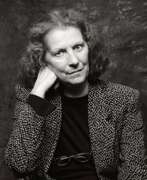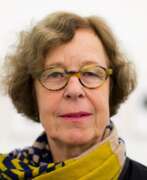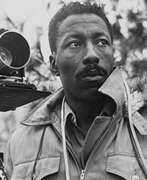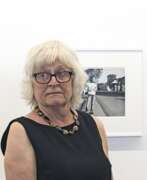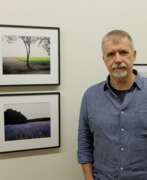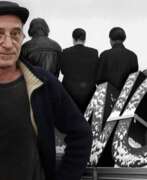Black & white photo 21st century
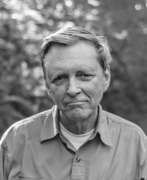

Robert Adams is an acclaimed American photographer known for his profound exploration of the American West's changing landscapes. His work, which gained prominence in the mid-1970s, delves into the tension between the natural beauty of the land and the marks of human encroachment. Adams's photography is a reflection on humanity's relationship with the environment, offering both a critique and a celebration of the landscape.
Robert Adams's notable series, such as "Turning Back" and "The New West," showcase his unique perspective on environmental and urban development issues. His work extends beyond just capturing images; it is a thoughtful commentary on the balance between nature and industrialization. His photographs, often devoid of people, focus on the land itself, telling a story of alteration and resilience.
Exhibitions of Adams's work, such as "American Silence: The Photographs of Robert Adams" at the National Gallery of Art, provide insight into his 50-year career and his ability to capture the silent yet profound narratives of the American landscape. His pieces are part of major collections and have been featured in numerous retrospectives, underlining his influence and significance in the world of photography.
For art collectors and enthusiasts, Robert Adams's work offers a poignant perspective on the American West, blending aesthetic beauty with critical environmental commentary. Engaging with his work invites reflection on our interaction with the landscape and our role in shaping the environment.
If you're interested in staying updated on Robert Adams's work and exhibitions, consider subscribing to newsletters from galleries and museums that feature his art. This way, you'll be informed about new displays of his work and opportunities to engage with his insightful perspectives on the American West.


Ellen Auerbach, born Ellen Rosenberg, is an American photographer of German-Jewish descent and a master of avant-garde photography.
Ellen studied at the Baden State School of Art and continued her studies at the Academy of Fine Arts in Stuttgart before meeting photographer Greta Stern (1904-1999) in Berlin. Together they opened Ringl+pit, a photography and design studio specializing in advertising, fashion and portrait photography. The photographer is most remembered for her groundbreaking work at this particular studio. Ellen, who also experimented with film, made two short black-and-white films.
In 1933, Ellen emigrated to Palestine and opened a children's portrait studio there. A few years later she moved with her husband Walter Auerbach to the United States, where she worked in a private art collection, taught photography, made films and photographs to study children's behavior, and worked as an educational therapist.
The Ringl+pit works and photographic oeuvre of Ellen Auerbach and Greta Stern were rediscovered in the 1980s, and a series of solo and group exhibitions in the United States and Germany followed.


Lillian Bassman was an American photographer and artist.
A magazine art director and fashion photographer, she became famous in the 1940s and '50s for her high-contrast, dreamy portraits of sylph-like models. Bassman's unique graphic style of photography illustrates the feminine mystique and glamour, as well as the boldness of an artist who blurs the lines between fashion photography and fine art. Working as art director for Bazaar magazine in 1945, she helped launch the careers of many of the century's most famous photographers.


Bernhard (Bernd) Becher and Hilla Becher were German conceptual artists and photographers working as a collaborative duo. They are best known for their extensive series of photographic images, or typologies, of industrial buildings and structures, often organised in grids. As the founders of what has come to be known as the 'Becher school' or the 'Düsseldorf School' they influenced generations of documentary photographers and artists. They have been awarded the Erasmus Prize and the Hasselblad Award.


Valérie Belin is a French art photographer. She lives and works in Paris.
Her work takes the form of photographic series. In the 2000s she started using digital post-production tools which gave her greater freedom to change and control the chromatic values of the prints. She now produced her first series in colour. In 2009 Belin began to use other kinds of digital manipulation, heightening the hybrid, graphic and artificial dimension of her work. These include solarisation and overprinting. Since then, she has also worked with other abstract vectorial forms, like digital "readymades" found on the internet, which she reworks on the computer, melding them with her images.
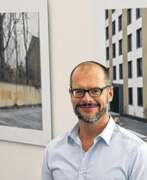

Oliver Boberg is a German artist, working with photography and video, whose work has been exhibited internationally. Mainly reflecting on the process of creating and recalling memories, Boberg's works are in the collections of institutions such as the Victoria & Albert Museum ( London, England) and the Museum of Modern Art (New York, NY).


Nick Brandt is a British photographer. He is known for his black and white photographs of wildlife and landscapes in Africa.
Brandt began his career in photography working as a music video director in the 1990s before transitioning to fine art photography. His work often depicts the animals of Africa in a powerful and emotive way, highlighting the beauty and fragility of these creatures and their natural habitats.
Brandt's photographs have been widely exhibited and are included in the collections of many major museums, including the National Portrait Gallery in London, the Museum of Fine Arts in Houston, and the Smithsonian National Museum of African Art in Washington, D.C. He has also published several books of his photography, including "On This Earth," "A Shadow Falls," and "Across The Ravaged Land."
In addition to his photography, Brandt is also the founder of the Big Life Foundation, a non-profit organization dedicated to the conservation of wildlife and ecosystems in East Africa. He has received numerous awards and honors for his photography and conservation work, including the prestigious Wildlife Photographer of the Year award.


Cornell Capa is an American photographer, photojournalist and founder of the International Center of Photography (ICP) in New York, the younger brother of the famous war correspondent Robert Capa.
Cornell Capa was known for his humanistic approach to photography, often capturing the lives and struggles of ordinary people. Throughout his career, he covered many important events, including the Spanish Civil War, World War II and the Vietnam War. Capa also photographed many famous people including John F. Kennedy, Marilyn Monroe and Pablo Picasso.
In 1974, Cornell Capa founded ICP, which has since become one of the world's leading photography education and exhibition institutions. The ICP's mission is to promote the understanding and appreciation of photography as an art form as well as a means of communication and social change.
Throughout his career Capa has received numerous awards and honours, including the National Medal of Arts in 1988. His photographs continue to be exhibited in galleries and museums around the world and his legacy lives on through ICP.


Henri Cartier-Bresson was a French artist renowned for his groundbreaking work in photography, particularly in the realms of photojournalism and street photography. Born on August 22, 1908, in Chanteloup, France, Cartier-Bresson's early artistic endeavors were in painting, which he began studying at the age of five. His transition to photography was marked by his adoption of a 35mm Leica camera in 1931, a tool that became synonymous with his work.
Henri Cartier-Bresson's photography is celebrated for its unique blend of spontaneity and composition, capturing moments that reveal deeper truths about their subjects. His theory of "the decisive moment" – that is, capturing an event that is ephemeral and spontaneous, yet significant – has had a profound influence on the field of photography. His work has been exhibited in prestigious venues such as the Museum of Modern Art in New York and is held in high esteem in art collections worldwide.
In addition to his personal achievements, Henri Cartier-Bresson was a co-founder of Magnum Photos in 1947, a cooperative agency for worldwide photographers that significantly influenced photojournalism. Later in his career, Cartier-Bresson returned to painting and drawing, demonstrating his lifelong commitment to the arts.
For art collectors and experts, Henri Cartier-Bresson's work offers a pivotal exploration of 20th-century photography, blending artistic vision with the unguarded moments of life. His influence extends beyond his images, shaping the way we perceive and engage with visual narratives.
To explore more about Henri Cartier-Bresson's influential career and works, and to stay updated on exhibitions or sales featuring his photography, you might consider subscribing to updates from art institutions or galleries that frequently showcase his work.


Lucien Clergue is a French photographer of black and white photography, the first photographer elected a member of the French Academy of Fine Arts.
Lucien Clergue is one of the most famous photographers in France and founder of the annual Arles Festival, which has become the main event in the world of artistic photography, attended by up to 100,000 people. His famous photographic works - modernist black and white studies of female nudes, harlequins, dead animals, gypsies and bullfighting - are considered exemplary of the photographer-artist. Clergue is also known for his friendship with Pablo Picasso, which lasted some 30 years, until the artist's death.


Bruce Landon Davidson is an American photographer. He has been a member of the Magnum Photos agency since 1958. His photographs, notably those taken in Harlem, New York City, have been widely exhibited and published. He is known for photographing communities usually hostile to outsiders.


Elsa and Johanna are a creative duo of photographic artists and filmmakers.
They were finalists for Prix HSBC pour la photographie 2016 and won the second Prix Picto de la mode 2017.
The duo's clients include well-known publications such as Le Temps, Boycott Magazine, L'Express 10, Crash Magazine, Etro, Boucheron and Apple.


Ori Gersht is an Israeli photographer and video artist. He is known for his use of photography and video to explore themes of memory, history, and conflict.
Gersht's work often involves the use of slow-motion and high-speed video, which allows him to capture the ephemeral and fleeting moments that are often overlooked in daily life. He also uses a range of photographic techniques, including still life and landscape photography, to create images that are both beautiful and haunting.
Some of Gersht's most famous series include "Time After Time," which captures the moment of a bursting flower, and "Liquidation," which explores the destruction of historical objects. He has also created video installations that examine the history and memory of the Holocaust.
Gersht's work has been exhibited in major museums and galleries around the world, and he has received numerous awards and honors for his contributions to the field of photography and video art. He continues to produce new work and is widely regarded as one of the most important contemporary artists working today.
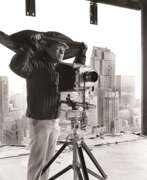

Ormond Gigli was an American photographer best known for his fashion and portrait photography. He was began his career as a freelance photographer in the 1940s, eventually becoming a staff photographer for several major publications, including LIFE, Time, and Harper's Bazaar.
Gigli's work is characterized by its striking use of color and composition, often featuring models in elaborate poses and settings. One of his most famous images is "Girls in the Windows," a photograph he took in 1960 of models posed in the windows of a Manhattan building slated for demolition.
Throughout his career, Gigli received numerous awards and accolades for his work, including the Lifetime Achievement Award from the American Society of Media Photographers in 2003. His photographs have been exhibited in galleries and museums around the world, and are held in the collections of many major institutions, including the Museum of Modern Art in New York and the National Portrait Gallery in Washington, D.C.


Nan Goldin is an acclaimed American photographer renowned for her profound visual narratives that delve into her personal world, marked by themes of addiction, sexuality, and intimate relationships. Born in Washington, D.C., in 1953, Goldin's journey into photography began in the early 1970s, capturing the lives of those around her, forming a "substitute family" amid a backdrop of drugs, sex, and violence.
One of Goldin's most celebrated works, "The Ballad of Sexual Dependency" (1986), is a raw and intimate portrayal of her "tribe," documenting their lives through the late 70s and early 80s in New York City. This work, initially presented as a slideshow, captures moments of love, sexuality, and domestic life, transcending into a poignant narrative of the era's challenges, particularly the AIDS crisis.
Throughout her career, Goldin's photography has continued to evolve, exploring various themes and mediums, including film. Her work, deeply personal and often autobiographical, challenges conventional perceptions of beauty, identity, and relationships, offering a window into the complexities of human connection and the essence of her subjects.
Goldin's influence extends beyond the art world, with her activism, particularly against the opioid crisis, marking another significant chapter in her journey. Her profound empathy and commitment to portraying the raw, unfiltered realities of life resonate through her extensive body of work, which continues to be celebrated in exhibitions and collections globally.
For art collectors and enthusiasts, Goldin's work offers not just aesthetic value but also deep emotional and historical resonance. To stay informed about Nan Goldin's works and related updates, signing up for newsletters from prominent galleries or her exhibitions could provide valuable insights and opportunities for engagement with her art.
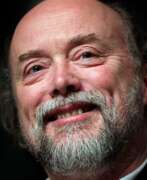

Bill Henson is an Australian photographer. He is known for his moody and atmospheric photographs of the human form, as well as landscapes and architectural interiors.
Henson began his career as a photographer in the 1970s and gained recognition in the 1980s for his moody and enigmatic images of teenagers. His work often explores themes of sexuality, desire, and the subconscious.
Throughout his career, Henson has continued to produce striking photographic works that push the boundaries of conventional portraiture and landscape photography. He has exhibited widely both in Australia and internationally and his work is included in the collections of many major museums, including the National Gallery of Australia, the Museum of Contemporary Art in Sydney, and the Solomon R. Guggenheim Museum in New York.
Henson has also been the recipient of numerous awards and honors for his photography, including the Centenary Medal from the Australian government in 2001 and the Officer of the Order of Australia in 2019.


Todd Hido is an American photographer and artist. He is best known for his moody and atmospheric photographs of suburban landscapes and homes, which often convey a sense of loneliness and isolation.
Hido's photographic style is characterized by his use of muted colors, soft lighting, and blurred images. He often photographs interiors and exteriors of homes at night, creating a dreamlike and eerie mood. His work is also known for its cinematic quality, and many of his images evoke the mood of film noir.
Hido's work has been exhibited in galleries and museums around the world, and his photographs have been published in numerous books and magazines. He has received many awards for his work, including a fellowship from the National Endowment for the Arts.
Hido's legacy as an artist and photographer continues to influence new generations of photographers and artists. His moody and evocative style has had a significant impact on the field of contemporary photography and has helped to redefine the way that we think about suburban landscapes and the concept of home.


Dennis Lee Hopper was not only a prominent figure in the American film industry but also an accomplished photographer whose work captured the essence of a transformative era in the United States. Hopper's artistic journey spanned various mediums, with photography holding a special place in his array of talents. His photographic career, which began in earnest during the 1960s, offers a compelling glimpse into the cultural and social landscapes of the time.
Dennis Lee Hopper's photography is celebrated for its raw, candid portrayal of his surroundings, capturing moments that range from the intimate to the chaotic. His images provide a personal narrative of his life and times, reflecting his connections with key cultural and artistic figures of the era. His work is not just a collection of images but a visual diary, chronicling the vibrant and often tumultuous world he inhabited.
Notably, Dennis Lee Hopper's photographic portfolio offers an invaluable perspective on the American counterculture movement, showcasing his keen eye for composition and his ability to capture the spirit of the moment. His photographs, including portraits of famous contemporaries and snapshots of street scenes, resonate with authenticity and artistic integrity.
For collectors and enthusiasts in the realms of art and antiques, Dennis Lee Hopper's photographs represent a unique convergence of cinematic and photographic artistry. His works not only capture moments in time but also evoke the broader cultural shifts of his era. For those interested in exploring Hopper's photographic legacy, staying informed about exhibitions and auctions can provide opportunities to engage with his work more deeply and appreciate his contribution to the art of photography.
To stay updated on Dennis Lee Hopper's photographic works and related events, subscribing to updates from art galleries and auction houses is recommended. This subscription will provide timely information on new exhibitions, sales, and insights into Hopper's impact on the world of photography and art.


Walde Huth, née Waldberta Huth, is a German photographer known for her street photos and portraits of famous people and fashion models.
She graduated from the State School of Applied Arts in Weimar, and after World War II she became a freelance photographer doing portrait and art photography. Walde Huth is primarily known for her fashion shots of the '50s, she also took unique stills and advertising photos, and created portraits of famous contemporaries. Her iconic fashion shots were taken in Paris. She shot the most famous models of her time not in the studio, but on location in the city, in front of the Eiffel Tower, along the Seine River, in contrast to the architecture and street life.
Walde Huth was an exceptional woman, a creative artist and a versatile photographer.


Robert Hill Jackson or Bob Jackson is a Pulitzer Prize-winning American photographer.
Robert attended Southern Methodist University while pursuing a passion for photography. While serving in the National Guard, Jackson became a photographer for an Army general. In 1960, he began working as a photo reporter for the Dallas Times Herald newspaper.
On November 22, 1963, Jackson was assigned to cover President John F. Kennedy's arrival at Love Field and his motorcade through the city. He witnessed Kennedy's assassination, but did not have time to film it. Two days later, however, he was able to photograph the shooting of Lee Harvey Oswald, the accused assassin of President Lee Harvey Oswald, by Jack Ruby in the garage of the Dallas police station. Robert Jackson was awarded the 1964 Pulitzer Prize in Photography for these photographs.


Colette Justine, better known as Colette Lumiere, is a Tunisian-born, American multimedia artist known for her pioneering work in performance art, street art, and her use of photography to create photographic tableau vivant. She is also known for her work exploring male and female gender roles, use of guises and personas, and for soft fabric environments, where she often appears as the central element.


Klaus Kinold is a German architectural photographer.
Klaus Kinold studied architecture at the Technical University of Karlsruhe with Egon Eiermann, and then decided not to build but to show architecture. He opened an architectural photography studio in Munich and studied panoramic photography. For more than 25 years, Kinold was editor and illustrator of the Swiss professional publication KS Neues, which featured silicate brick buildings, and lectured on photography at the State Academy of Fine Arts in Stuttgart.
In 1983, Klaus Kinold had his first solo exhibition at the Rudolf Kieken Gallery in Cologne, followed by many other prestigious shows. From 2019 to August 2020, the DKM Museum in Duisburg designed the exhibition "Architecture through the eyes of a photographer", featuring the work of architects Carlo Scarpa, Rudolf Schwarz and Hans Döllgast.
Kinold documented almost all of the famous architects' projects. It was important to the photographer that his preferably black and white photographs were clear, objective, rational and factual in their presentation.


Helga Kneidl, née Claus, is a German photographer.
Helga worked as a dancer in her youth and married stage designer Karl Kneidl in 1961. She then learned theater photography in Zurich and worked in theaters as a staff photographer. Helga Kneidl gradually gained a reputation for taking portraits of many famous people, and her work was published in newspapers and magazines.
In May 1973, Helga Kneidl spent three full days with actress Romy Schneider in Paris, taking a series of photographic portraits of her.
Since 1997, Helga Kneidl lives in Berlin and works mainly in portrait photography.


Annie Leibovitz is an American photographer. She is one of the most well-known and highly regarded portrait photographers in the world, and her career spans over five decades.
Leibovitz began her career as a staff photographer for Rolling Stone magazine in 1970, where she quickly gained a reputation for her unique and intimate portraits of celebrities and musicians. She went on to work for Vanity Fair and Vogue magazines, where she continued to photograph some of the most famous and influential people of our time.
Leibovitz's distinctive style often involves using dramatic lighting, bold colors, and provocative poses to capture the essence of her subjects. Her work has been exhibited in museums and galleries around the world, and she has received numerous awards and honors for her contributions to the field of photography.
Some of Leibovitz's most famous photographs include the portrait of John Lennon and Yoko Ono, taken hours before Lennon's death, and the cover photo of a pregnant Demi Moore for Vanity Fair. Her photographs are often highly sought after and have been featured in many books and exhibitions.


Helen Levitt was an American photographer known for her street photography of New York City. Levitt began taking photographs as a teenager and went on to work for the photo agency, the Photo League, in the 1930s and 1940s.
Levitt's work focused on capturing the daily lives of ordinary people, particularly children, in the neighborhoods of New York City. She used a small 35mm camera to take candid shots of children playing in the streets, creating images that were both playful and poignant. Her work was often compared to the work of fellow street photographers, such as Henri Cartier-Bresson and Walker Evans.
In addition to her photography, Levitt also worked as a filmmaker and created several acclaimed documentaries.
Levitt's photographs have been exhibited in major museums around the world, including the Museum of Modern Art in New York and the San Francisco Museum of Modern Art. She was awarded numerous honors for her work, including a Guggenheim Fellowship and a National Endowment for the Arts Grant.
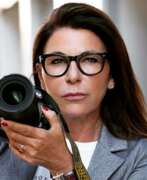

Angela Lo Priore is an Italian portrait photographer living and working in Rome and Milan.
Women are one of the main subjects of Angela's photographs, but scenic design plays an important role here, helping to create surrealistic subjects.
Having experimented with different forms of photography in architecture, advertising and fashion, Angela Lo Priore has found her true artistic expression in portraiture. The portraits of stars and divas of Italian and world cinema are her most famous works. The result of this work is the book "One Hundred Portraits", a gallery of one hundred stunning photographic portraits of famous actors, actresses and directors.


Vera Lutter is a German artist based in New York City. She works with several forms of digital media, including photography, projections, and video-sound installations. Through a multitude of processes, Lutter's oeuvre focuses on light and its ability to articulate the passing time and movement within a tangible image.


Christopher Makos is an American photographer and artist living and working in New York City.
Makos has traveled extensively in Europe, studied architecture in Paris, and studied with photographer Man Ray. In 1977 he met media artist and pop art star Andy Warhol and has been friends, traveled with him and photographed him extensively ever since. Makos published several acclaimed books on Warhol, and the latter called Makos "the most modern photographer in America."
In addition to him, Makos took photographic portraits of many art stars, including Elizabeth Taylor, Salvador Dali, John Lennon and Mick Jagger. His work has been published by many of the world's most famous magazines.


Stefan Moses was a German photographer living in Munich.
His documentary portraits of people and professions in West Germany (Germans) and later in East Germany (Farewell and Beginnings) made him accessible to a large audience. Moses took people out of their working environment and photographed them in front of a grey linen cloth — thus creating contemporary documents.


Helmut Newton (born Helmut Neustädter) was a German-Australian photographer. The New York Times described him as a "prolific, widely imitated fashion photographer whose provocative, erotically charged black-and-white photos were a mainstay of Vogue and other publications."


Carmen Oberst is a German artist, graphic designer and photographer.
She has lived in Hamburg since 1980 and works as an independent photographic artist, curator and teacher of design using photographic media.
Carmen Oberst originally worked as a graphic designer. Since 1997 she has been active in photography and experimental film, holding numerous exhibitions at home and abroad. Back in the 1980s, she developed her own visual language based on analog black and white photography and photoalchemical experiments. And in 1996 she founded PHOTO.KUNST.RAUM, a center for fine art photography and fine art known outside Hamburg.
Carmen Oberst turns the world into a stage: she routinely uses found events and randomly present people to create a fantastical production from the group of works "Rods of Imagination - On the Road" through the medium of photography.


Jacques Olivar is a Moroccan fashion and advertising photographer and filmmaker.
In his youth he worked as a pilot of passenger air transport, but by the age of 40 he finally realized that photography is his vocation. And he became successful quite quickly. Since 1987, fashion photography has become his main profession. Jacques Olivar works for leading fashion magazines and has won many awards.
Emotion, elegance and beauty are the invariable key elements underlying Jacques Olivar's photographic works. The black and white images create an atmosphere of neorealism, while the color images seem to reference the heyday of cinema and build on the idea of the "American Dream".


JR (French: Jean René) is the pseudonym of a French photographer and artist who does not give his full name. He lives and works in Paris and New York.
He describes himself as a "photograffeur" (photographer and graffiti artist in one word) and claims that the street is "the biggest gallery in the world". His work is flyposting large black and white images in public spaces. JR works at the intersection of photography, street art, filmmaking and social activism. Over the past two decades he has developed many public projects in cities around the world, from buildings in the slums of Paris to walls in the Middle East and Africa or favelas in Brazil.
JR places large-scale photographic images in public spaces. He started creating graffiti as a teenager on the streets and rooftops of Paris and on the subway. In 2007, he gained worldwide attention by placing huge photographs of Israelis and Palestinians face to face in eight Palestinian and Israeli cities on both sides of the separation barrier. In his works, the photographer always addresses current political and social issues in the world. For example, in 2019, JR worked with a group of inmates of a maximum security prison in California and created a large format piece with portraits of the inmates.
JR has traveled to many cities with his work, participating in exhibitions, he has collaborated with magazines and created films about his work. JR has also directed three feature-length documentaries, one of which, Women Are Heroes (2011) was nominated for an Oscar. At the 2017 Cannes Film Festival, he won the Golden Eye for Best Documentary.


Edward Ruscha, an American artist born in 1937, is a prominent figure associated with West Coast Pop art, celebrated for his innovative approach to blending visual and verbal language within his works. Ruscha's journey in the art world began after moving to Los Angeles in 1956, where his fascination with the urban landscape and commercial culture flourished. He attended Chouinard Art Institute, now known as CalArts, which laid the foundation for his artistic exploration.
Edward Ruscha's art is deeply influenced by the Hollywood film industry, with works like "Large Trademark with Eight Spotlights" echoing the commercial graphics and cinematic influence of his time. His "Word paintings" series, starting in the 1960s, showcases his unique approach to typography and language, setting monosyllabic words against solid backgrounds, a style that continued to evolve throughout his career.
During the 1970s, Edward Ruscha expanded his narrative, incorporating phrases into his works, further exploring the relationship between text and image. His work in the 1980s and beyond includes landscapes juxtaposed with text, creating intriguing visual narratives that challenge viewers to find connections between the words and the images.
Edward Ruscha's contributions to the art world are significant, with his works held in major collections and institutions. His career spans various mediums, including painting, printmaking, photography, and artist's books, showcasing his versatility and enduring influence on contemporary art.
For enthusiasts and collectors of modern art, Edward Ruscha's works offer a unique blend of visual artistry and linguistic play. His innovative approach to combining text and image has cemented his status as a pivotal figure in contemporary art. To stay updated on the latest exhibitions, sales, and insights related to Edward Ruscha's art, consider subscribing to updates from renowned art galleries and auction houses. This subscription will ensure you're informed about new opportunities to engage with and appreciate the distinct and influential art of Edward Ruscha.


Rainer W. Schlegelmilch is a German motorsport photographer and photojournalist.
He studied at the Bavarian State College of Photography in Munich and already presented his work from motor racing at his graduation in 1962. Since then, this sport has been the main subject of Schlegelmilch's work. In 1964 he opened his own studio in Frankfurt for photo design and advertising photography.
The series of photographs of Formula One and FIA championships, which Schlegelmilch began in 1962, represent one of the most extensive collections of photographic material in the history of motor racing. His archive contains more than 600,000 images, which were black and white until 1970 and then color.
Schlegelmilch has published some 40 illustrated books on motorsport and calendars from various racing series, and has participated in exhibitions around the world. For his unique skill he is called "the eye of Formula 1", and Bernie Ecclestone many years ago gave him a press pass valid until the end of his life. Brands such as Ferrari, Porsche, BMW, Mercedes and Aston Martin have used his work for luxury publications.


Linn Schröder is a German photographer living and working in Hamburg and Berlin.
Schröder studied at the HAW University Hamburg, then went on to study at the Hochschule für Arbeitsgemeinschaft in Hamburg, specializing in communication design/photography, and the Gestalt School in Zurich.
Her works often deal with the relationship between dream and reality, they are like a record of memories. Some of Linn Schröder's series are based on family photographs. The images in her photo series "I Think and Family Photographs" deal with one of the most original tasks of photography - to capture and preserve memories.
Many of the photographer's works have won numerous awards and have been shown repeatedly throughout Europe. Linn Schröder collaborates with international magazines and regularly teaches at the Berlin-Weißensee School of Art, the HTW Berlin Institute and the Ostkreuzschule for Photography, among others. Several books have been published on Schröder's work.


Laurie Simmons is an American artist, photographer and filmmaker. Since the mid-1970s, Simmons has staged scenes for her camera with dolls, ventriloquist dummies, objects on legs, and people, to create photographs that reference domestic scenes. She is part of The Pictures Generation, a name given to a group of artists who came to prominence in the 1970s. The Pictures Generation also includes Cindy Sherman, Barbara Kruger, and Louise Lawler.


Dayanita Singh is an Indian photographer whose primary format is the book. She has published fourteen books.
Singh's art reflects and expands on the ways in which people relate to photographic images. Her later works, drawn from her extensive photographic oeuvre, are a series of mobile museums allowing her images to be endlessly edited, sequenced, archived and displayed. Stemming from her interest in the archive, the museums present her photographs as interconnected bodies of work that are full of both poetic and narrative possibilities.


Alec Soth is an American photographer. He is known for his large-format color photographs that often explore the themes of American life, culture, and landscape.
Soth began his career as a newspaper photographer before transitioning to fine art photography. He gained recognition for his project "Sleeping by the Mississippi," which features photographs of people and places along the Mississippi River.
Throughout his career, Soth has continued to produce photographic projects that explore various aspects of American life, from small towns to suburban communities. He has also published several books of his work, including "Songbook," "Broken Manual," and "I Know How Furiously Your Heart is Beating."
Soth's work has been exhibited widely and is included in the collections of many major museums, including the Museum of Modern Art in New York, the Whitney Museum of American Art, and the San Francisco Museum of Modern Art. He has also received numerous awards and honors for his photography, including a Guggenheim Fellowship, the Infinity Award from the International Center of Photography, and the Deutsche Börse Photography Foundation Prize.
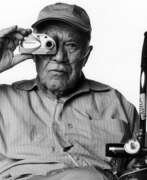

Philip "Snapdragon" Stern was an American photographer noted for his iconic portraits of Hollywood stars, as well as his war photography while serving as a U.S. Army Ranger with "Darby's Rangers" during the North African and Italian campaigns in World War II.


Bert Stern, real name Bertram Stern, is an American fashion photographer and documentary filmmaker.
His career began with the iconic and legendary Smirnoff Vodka advertising campaign in 1955. Using a well-equipped studio, Stern experimented with many of the latest techniques, including videotaping, screen printing, photo offset combinations and computer prints. His brilliant work made him a star in the advertising world, photographing advertising campaigns for Canon, Dupont, Pepsi-Cola, US Steel and Volkswagen brands. One of the high points of Bert Stern's career was working for Vogue in the 1960s.
Despite his drug addiction, the fashion photographer was sought after by Madison Avenue, Hollywood and the international fashion scene for decades.
Stern was one of the last photographers to shoot Marilyn Monroe in June and July 1962, six months before her death. Some of these photographs were published in Vogue magazine. In 1982, Bert Stern published The Last Sitting, a book that includes many of his more than 2,500 images, including those that Monroe did not like and were crossed out.
Stern directed and cinematographed the films Jazz on a Summer's Day (1959), A Date with an Angel (1987), and The Unknown Marilyn (2012).


Robert Stivers is an American photographer.
He became interested in photography at a mature age, after a career as a dancer and choreographer. Self-taught in the art of photography, Stivers prides himself on his printing skills. His photographs are printed on matte paper and are often tinted by hand or processed in a darkroom.
The aesthetics of early photography and silent film are evident in Stivers' work, helping the viewer immerse himself in a familiar but distant cultural unconscious. In his technique, the photographer uses defocused images, a blur of movement, to create a hazy vision of the world. In Stivers' photographs, the viewer sees ghostly images of dreams, where objects float and pose, or find themselves caught in the middle of a gesture that reflects his past history in dance.


Dennis Stock was an American photographer known for his iconic images of celebrities and musicians, as well as his extensive coverage of social issues and cultural events.
Stock began his career as a freelance photographer in the 1950s and was soon hired by the Magnum Photos agency, where he worked alongside other influential photographers such as Robert Capa and Henri Cartier-Bresson. He quickly became known for his photographs of jazz musicians, including Miles Davis, Louis Armstrong, and Duke Ellington.
In 1955, Stock received an assignment from LIFE magazine to photograph a young actor named James Dean. The resulting images, including a now-famous photograph of Dean walking through Times Square in the rain, became some of the most iconic photographs of the 20th century.
Stock continued to photograph celebrities and cultural figures throughout his career, including Audrey Hepburn, Marlon Brando, and Andy Warhol. He also covered major events such as the civil rights movement, the Vietnam War, and the Woodstock music festival.
Stock's work has been exhibited in galleries and museums around the world and has been the subject of several books and documentaries. He was known for his ability to capture intimate moments and his talent for revealing the personalities and emotions of his subjects through his photographs.




















































































